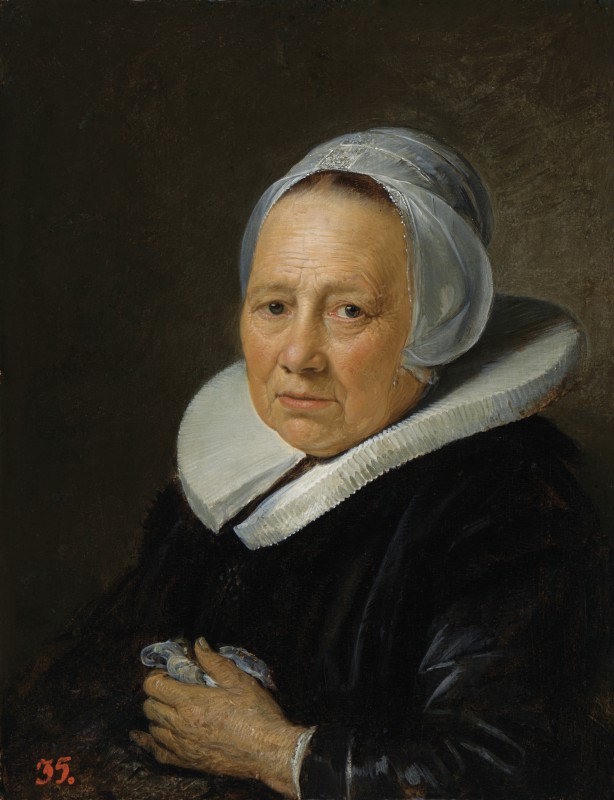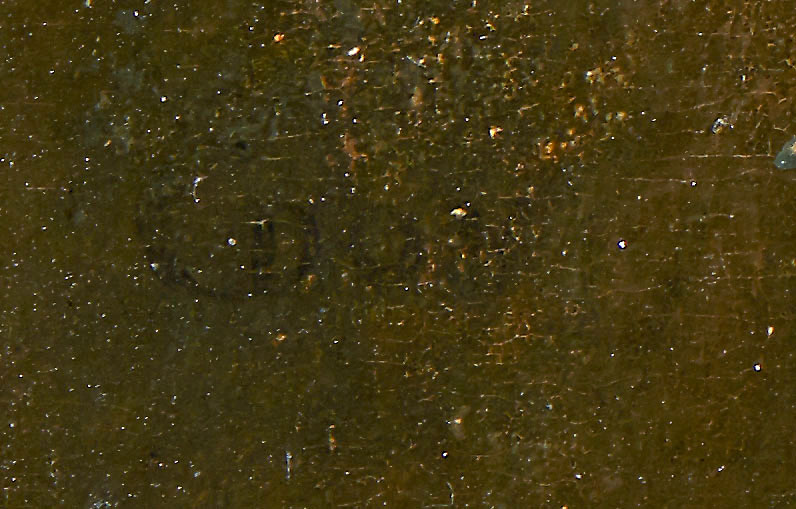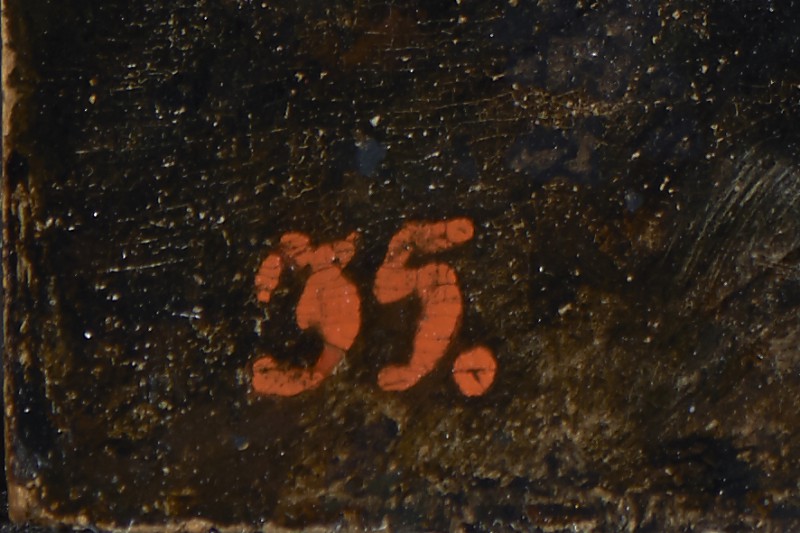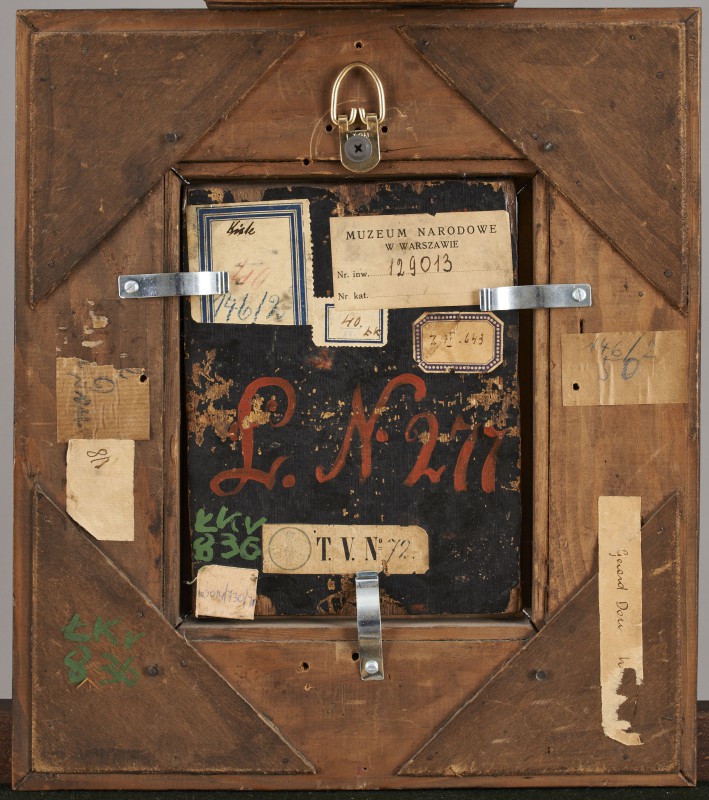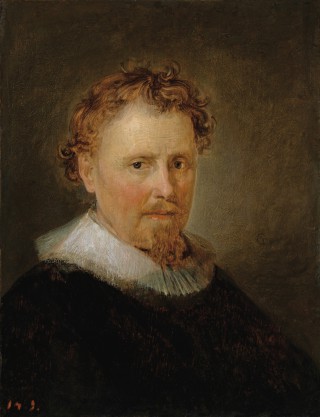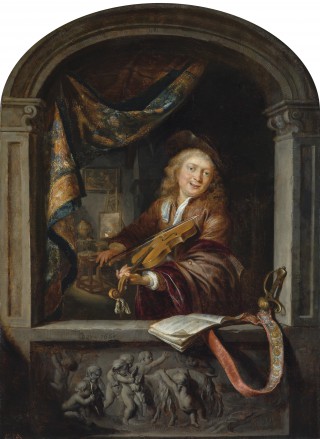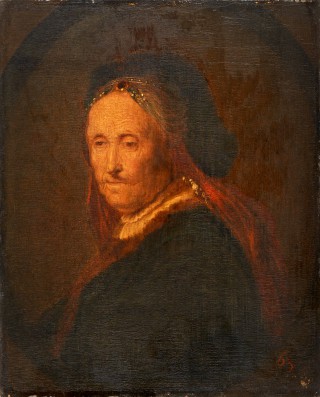The Artist’s Mother, Marritge Jansdr. van Rosenburg
- Date
- c. 1640-1645
- Object type
- painting
- Technique
- oil
- Material
- oak
- Dimensions
- 18,5 x 14,1 cm
- Acquisition date
- 1774
- Location
- The Palace on the Isle - Portrait Room, ground floor
- Marks and inscriptions
- signed GDOV (GD interlaced, signature barely legible) on left, at shoulder height; red number 35 of the Stanisław August collection, bottom left
- Place of Origin
- Netherlands (Europe)
- Owner
- The Royal Łazienki
- Museum number
- ŁKr 836
Pendant to cat. no. 38. [cf. The Artist’s Father, Douwe Jansz. de Vries van Arentsvelt] ...
In Stanisław August’s catalogues and 19th-century inventories of the Łazienki the portraits were listed as autograph works by Gerard Dou. This original attribution, adopted in 19th- and 20th-century literature, was rejected by Ronni Baer (R. Baer, The Paintings of Gerrit Dou (1613–1675), Ann Arbor [MI], 1990), who believed them to be 17th-century copies. Since then, the present painting has been published either as ‘ascribed to’ Dou or as ‘probably by’ the master. ...
The identification of the pair of Łazienki portraits as the artist’s parents is likely, although it is not documented in the archives. It can be confirmed, however, by Gerard Dou’s signed self-portrait showing the artist half-length, with his hand resting on a portrait depicting a man and a woman sitting at a table with a younger man standing behind them. Dou’s self-portrait, in the collection of the Herzog Anton Ulrich-Museum in Braunschweig ... , is dated to c. 1645 (W. Sumowski, Gemälde der Rembrandt-Schüler, vol. 1–6, Landau–Pfalz 1983–94, vol. 1, 1983, no. 301), or c. 1650 (cf. Baer 1990, no. 56; J. Aono in: Portret in portret in de Nederlandse kunst 1550–2012, exh. cat., S. Craft-Giepmans, A. De Vries et al., Dordrechts Museum, 2012–13, Dordrecht 2012, no. 22). According to the conventions established from the 16th century onwards, a representation of this kind, i.e. ‘a portrait within a portrait’, is undoubtedly of a commemorative nature—and depicts the artist’s family. If the date is assumed to be c. 1650, it shows the artist’s already deceased mother and brother, and his father (see. cat. no. 38). The artist’s mother, Marritge Jansdr. van Rosenburg, died in 1647 and his brother, Jan Douwes. van Arentsvelt, in 1649 ... . The man and woman sitting at the table are without doubt the same people shown in the pair of Łazienki paintings. In the case of the woman, not only is her physiognomy identical, so is the slant of her shoulders, the arrangement of her hands and the details of the dress. ... . [See D. Juszczak, H. Małachowicz, The Stanisław August Collection of Paintings at the Royal Łazienki. Catalogue, Royal Łazienki Museum, Warsaw 2016, no. 37, pp. 160–161.]
